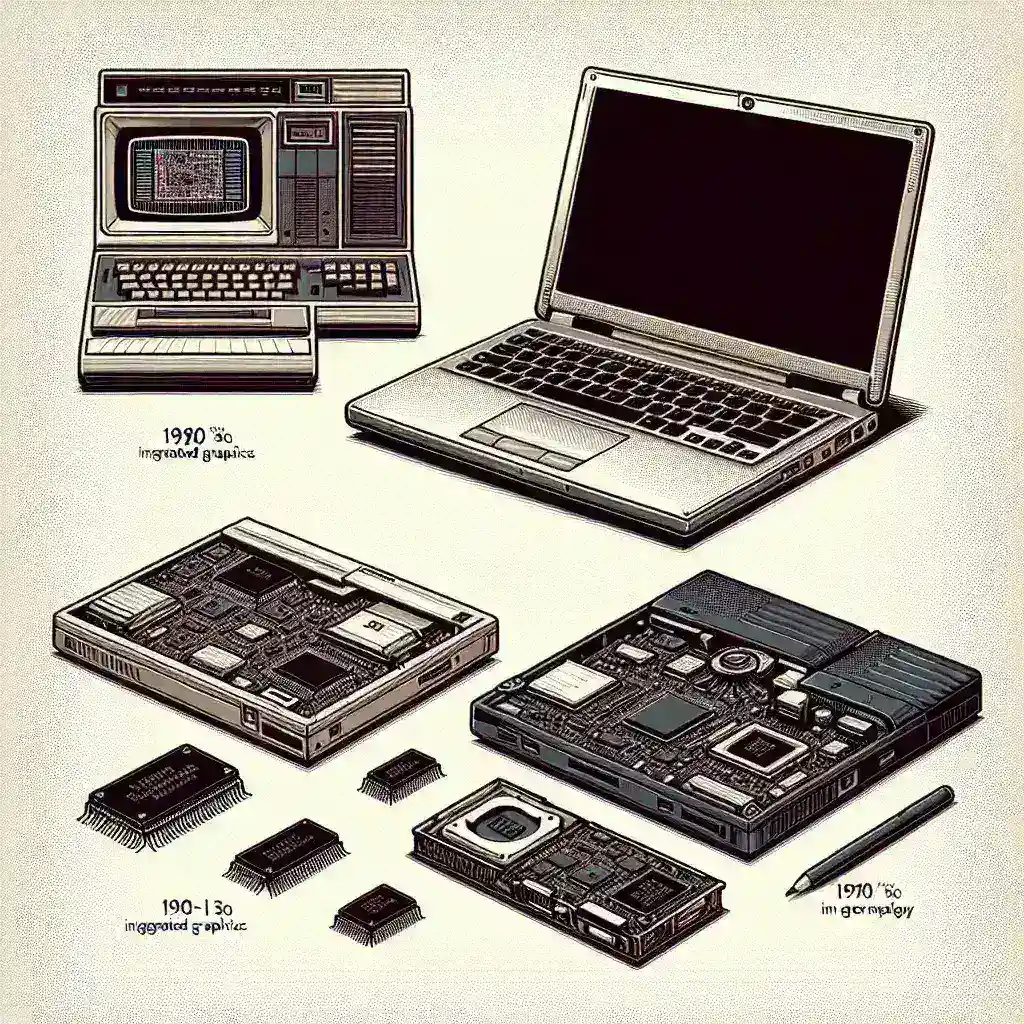Introduction
In the contemporary landscape of computing, graphics processing has become a fundamental aspect of laptop performance, transcending its traditional boundaries. The integration of graphics into mainstream laptop chips has revolutionized how users experience gaming, multimedia, and productivity applications. This article delves into the journey of graphics integration, exploring its historical context, technological advancements, and the implications for future developments.
The Historical Context
The evolution of graphics processing can be traced back to the early days of computing. Initially, computers operated with rudimentary graphics capabilities, primarily limited to basic text displays. As technology advanced, so did the demand for enhanced visual experiences. The late 1980s and early 1990s witnessed the emergence of dedicated graphics processing units (GPUs), which significantly improved rendering speeds and visual fidelity.
The Rise of GPUs
Dedicated GPUs gained popularity among gamers and graphic designers, transforming the perception of graphics in computing. These specialized components handled complex calculations, freeing up the central processing unit (CPU) for other tasks. Over time, GPU manufacturers, such as NVIDIA and AMD, began developing powerful graphics chips that could be integrated into laptops, paving the way for a new era of computing.
The Shift to Integration
As laptops became increasingly portable and powerful, the need for integrated graphics solutions grew. The early 2000s marked a significant shift in the industry, as manufacturers sought to reduce costs and improve battery efficiency. This led to the development of integrated graphics solutions, where the GPU was embedded within the CPU.
Benefits of Integration
- Cost Efficiency: Integrating graphics into mainstream chips reduced production costs, making laptops more affordable for consumers.
- Power Consumption: Integrated graphics offered better power management, extending battery life—a crucial factor for mobile devices.
- Space Saving: Combining the CPU and GPU into a single chip saved physical space, allowing for slimmer laptop designs.
Technological Advancements
The integration of graphics into mainstream laptop chips was propelled by several technological advancements. The introduction of multi-core processors enabled simultaneous processing tasks, enhancing both CPU and GPU performance. Furthermore, advancements in manufacturing techniques, such as smaller nanometer processes, allowed for more transistors on a single chip, boosting overall performance.
Emergence of APUs
One of the most significant milestones in graphics integration was the development of Accelerated Processing Units (APUs) by AMD. APUs combined the CPU and GPU on a single die, optimizing performance for both processing tasks and graphics rendering. This innovation provided a balanced approach, catering to users who required both computational power and visual performance.
Real-World Impact
The integration of graphics into laptop chips has had profound implications for various sectors. Gamers can now enjoy immersive experiences without the need for bulky external GPUs, while creative professionals benefit from enhanced rendering speeds for video editing and graphic design tasks. Additionally, integrated graphics have made powerful computing accessible to a broader audience, including students and casual users.
Statistics and Market Trends
According to recent market research, nearly 70% of laptops sold today feature integrated graphics solutions. This trend reflects a growing acceptance of integrated GPUs among users who prioritize efficiency and portability. Furthermore, the advancements in integrated graphics have led to significant improvements in gaming performance, enabling modern titles to run smoothly on mainstream laptops.
The Future of Graphics Integration
Looking ahead, the future of graphics integration in laptop chips appears promising. As technology continues to evolve, we can expect further enhancements in performance and efficiency. Emerging technologies, such as artificial intelligence (AI) and machine learning, are anticipated to play a pivotal role in shaping the next generation of integrated graphics.
Predictions and Innovations
- AI-Driven Graphics: Future integrated graphics solutions may harness AI to optimize rendering techniques, delivering stunning visuals with minimal power consumption.
- Enhanced Ray Tracing: As ray tracing technology matures, integrated graphics chips will likely evolve to support real-time ray tracing, enhancing realism in gaming and multimedia.
- Cloud Gaming Integration: With the rise of cloud gaming, integrated graphics may work in tandem with cloud services, allowing users to experience high-quality graphics without the need for powerful local hardware.
Conclusion
The integration of graphics into mainstream laptop chips has transformed the computing landscape, offering enhanced performance, efficiency, and accessibility. From its humble beginnings to the future of AI-driven graphics solutions, the journey of graphics integration reflects the relentless pursuit of innovation in the tech industry. As laptops continue to evolve, we can anticipate even greater advancements that will reshape how we interact with digital content.

Leave a Reply